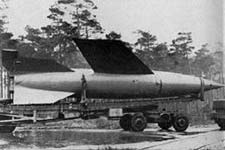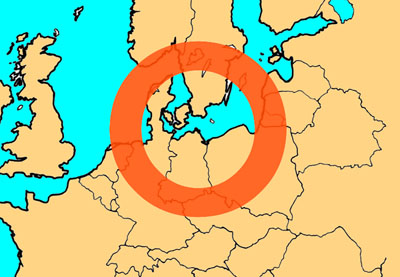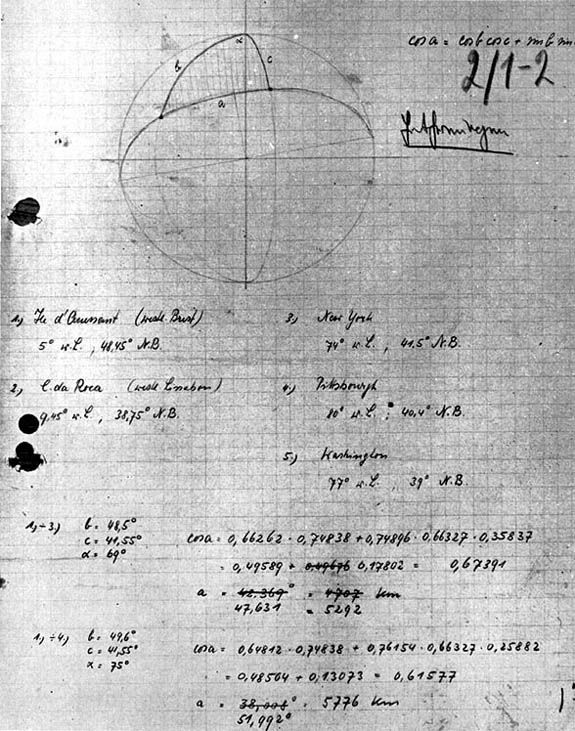|
Performance of the A9 During the Ghost Rocket flap of 1946, Swedish and British intelligence organizations expressed fears that the objects were A9s being launched from Peenemunde by Soviet occupation forces. The maximum range of the fully-developed A9 was 400 miles, as shown below. Stockholm would have been at the limit of the capability of missiles launched from Peenemunde.
The Swedes also considered the possibility that the Estonian islands of Dago and Osel (Hiiumaa and Saaremaa) were launch sites for the missiles. Bases on these islands would have put much of Sweden, Norway and Finland within range of of A9s. Intercontinental Capability Early performance calculations (probably made around the middle of 1941) for a two-stage A9/10 "America Rocket" with a metric-ton high explosive warhead resulted in the trajectory shown below. The 375,000 lb thrust first stage engine would accelerate the rocket into a ballistic path. The second stage would separate at an altitude of about 80,000 feet and would fire its own engine, accelerating to about 6,600 mph and climbing to a peak altitude of about 175 km., which would be reached some 500 km downrange. From this point the winged upper stage would dive to a minimum altitude of some 75 km at a distance of about 1,200 km from the launch site. The missile would arc back up to a 100 km secondary peak, after which it would push over into a long, shallow, high-speed glide toward its target, which could be up to 4,000 km (2,485 miles) from the launch site. This was insufficient to reach targets in the US.
<
"Trajectory of a two-stage long range rocket with wings. Range: 4000 km"
The range problem led to studies of launch sites at the western extremities of the Continent. Von Braun's back-of-the-envelope calculations for this contingency are shown above. Launch Site 1 - Peninsular site west of Brest, France, 48.45N 5W - used to attack New York City Launch Site 2 - Cape Roca, near Lisbon, Portugal, the westernmost point of continental Europe, 38.75N 9.45W - used to attack Pittsburgh and Washington, DC (Brest is approximately 3300 statute miles from New York City. Cape Roca is approximately 3600 statute miles from Washington, DC and 3700 miles from Pittsburgh) Redesign of the engine of the A10 provided both improved thrust and reduced liftoff weight, and the final trajectory, shown below, gave an ultimate range of about 5,500 km (3,400 mi) -- sufficient to reach New York. Possibly the intention was to attack the other targets with reduced payloads.
These plans are more than interesting historical footnotes. The Peenemunde designers would have needed precious time and material resources to complete development of the A9 and these were simply unavailable by 1944, when the A4b project was finally started. But the mere fact that the plans had been given serious engineering consideration stood von Braun in good stead after the war. What if the Soviets were working on the A9 themselves? he could ask his captors. The mere threat of the A9's existence was a guarantee that he and his team members would be in a key bargaining position in the postwar era. |




